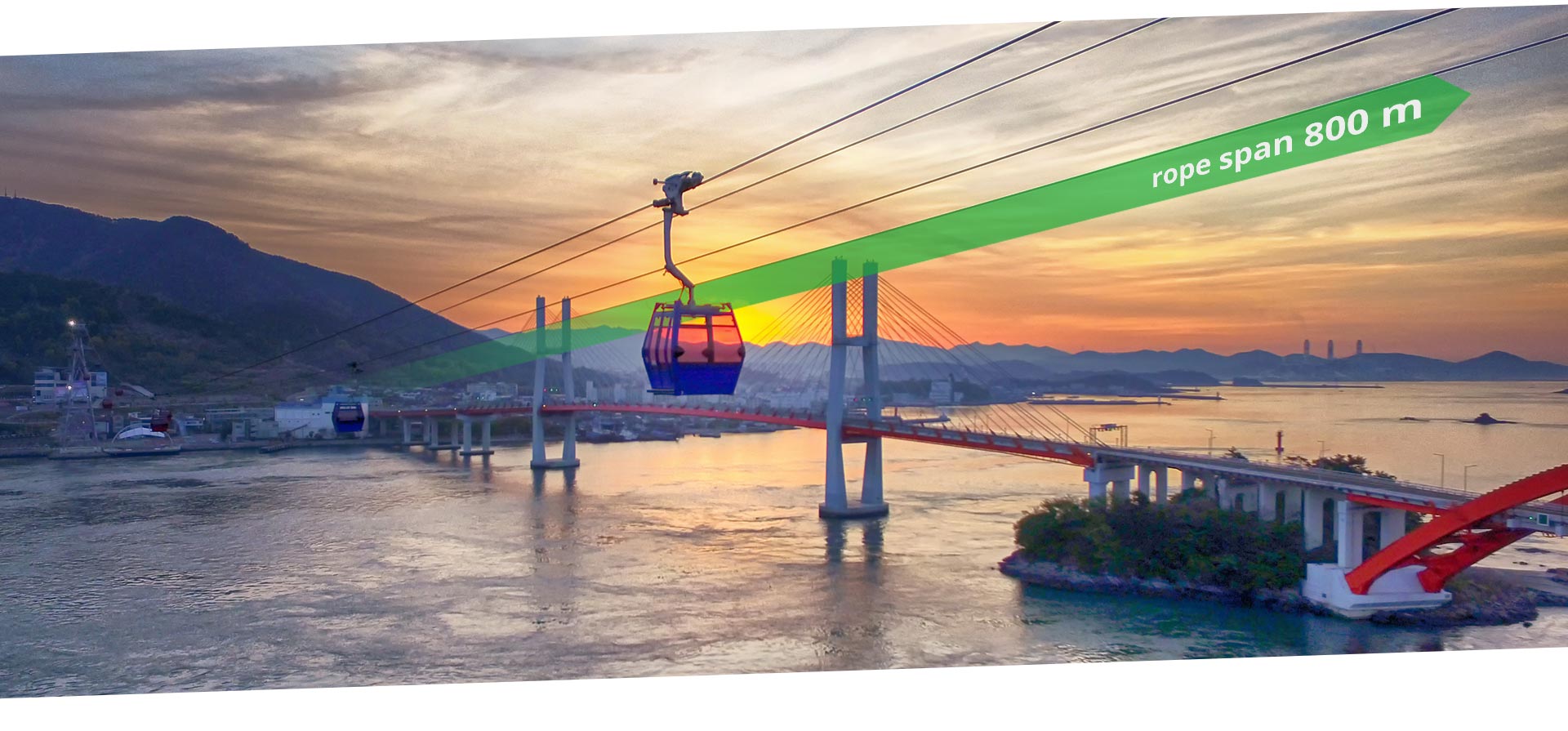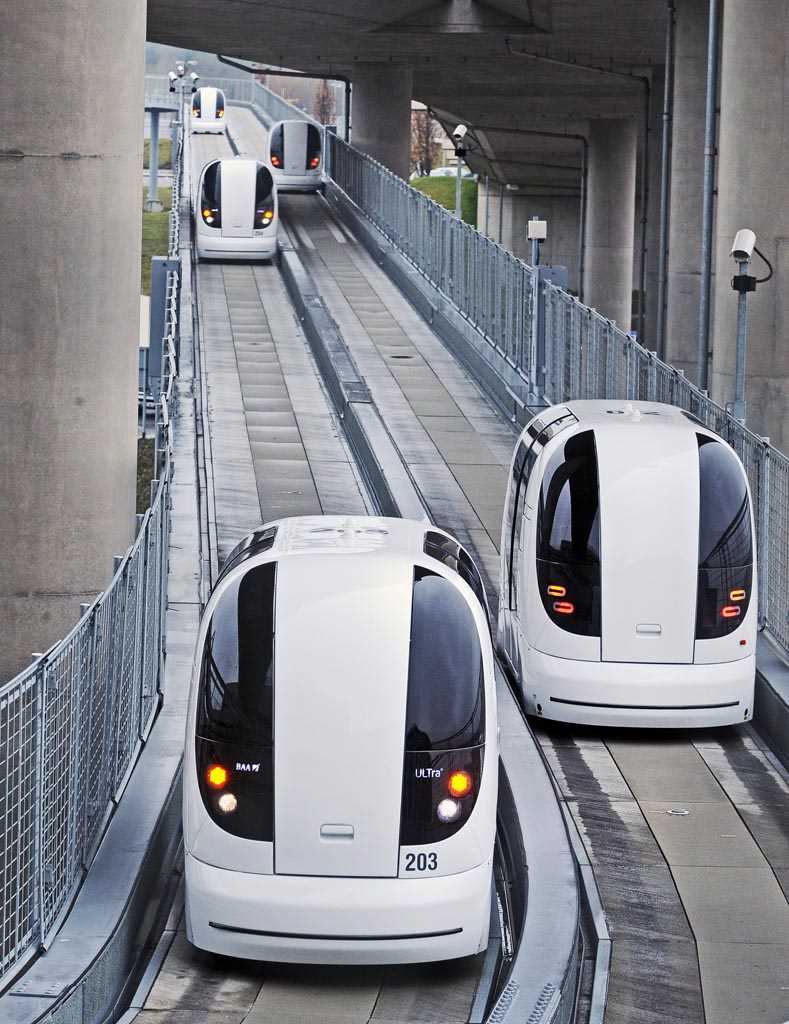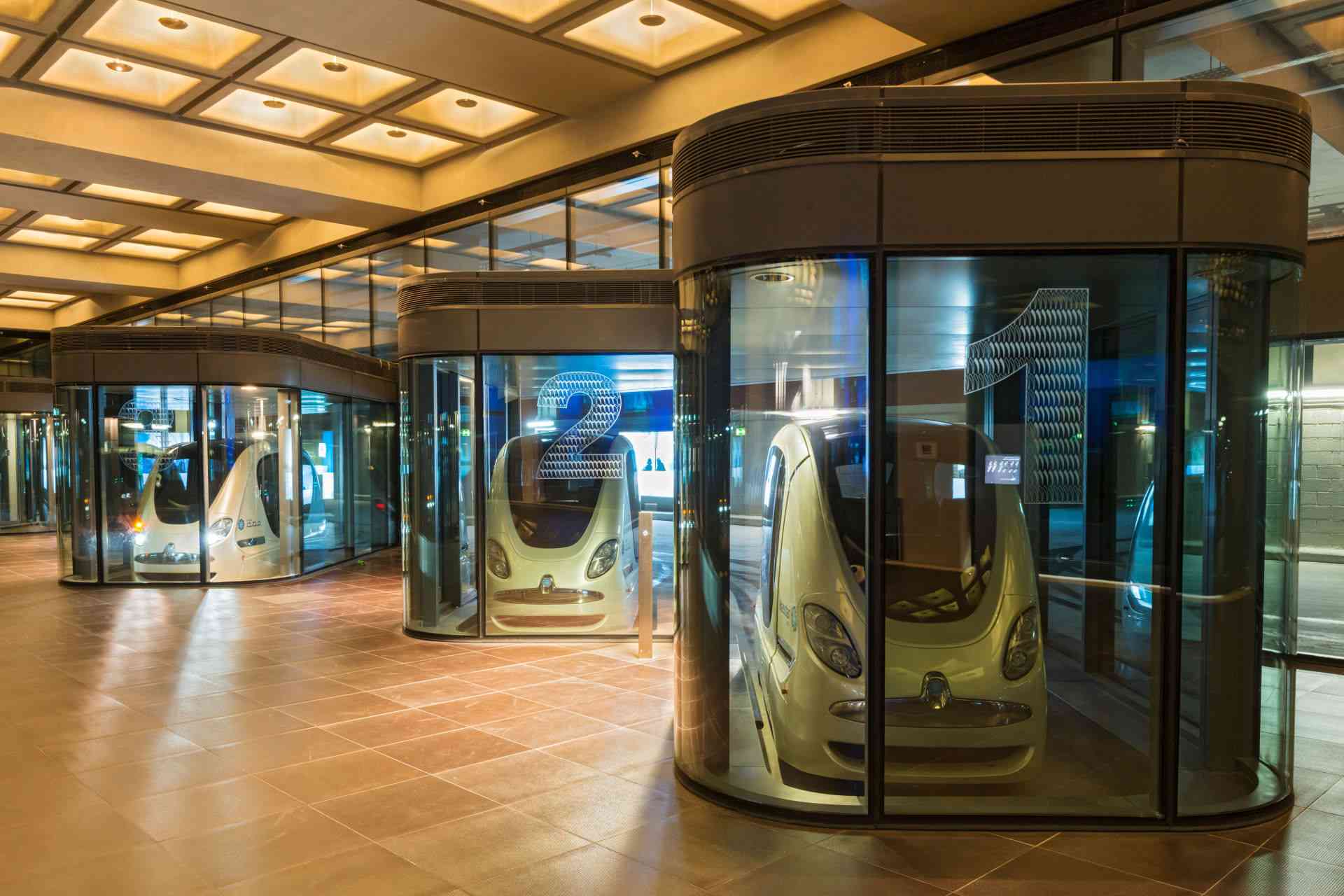
Personal Rapid Transit (PRT) | Group Rapid Transit (GRT)
Personal Rapid Transit (PRT) is a concept of a driverless and guided transit system that transfers passengers to their destinations individually and on demand without intermediate stops.
 Personal Rapid Transit (PRT) is therefore related to the recently emerging autonomous vehicles, with the difference that PRT systems operate on dedicated, primarily elevated guideways rather than in mixed traffic. In contrast to other automated public transit systems, passengers arrive at their chosen destinations in small cabins. The passenger does not have to follow a timetable; instead, the vehicle waits for the passenger. This ideal situation depends on the capacity utilization of the entire system.
Personal Rapid Transit (PRT) is therefore related to the recently emerging autonomous vehicles, with the difference that PRT systems operate on dedicated, primarily elevated guideways rather than in mixed traffic. In contrast to other automated public transit systems, passengers arrive at their chosen destinations in small cabins. The passenger does not have to follow a timetable; instead, the vehicle waits for the passenger. This ideal situation depends on the capacity utilization of the entire system.
 The disadvantage of PRT is the substantial system complexity that arises when network applications will be used. For this reason, the technology will have difficulties gaining acceptance in urban contexts, where safety and reliability are key issues. Furthermore, the limited capacity of the vehicle (max. 10 passengers) and the associated low system capacity (max. 2,500 pphpd) are also limiting factors in public transport.
The disadvantage of PRT is the substantial system complexity that arises when network applications will be used. For this reason, the technology will have difficulties gaining acceptance in urban contexts, where safety and reliability are key issues. Furthermore, the limited capacity of the vehicle (max. 10 passengers) and the associated low system capacity (max. 2,500 pphpd) are also limiting factors in public transport.
To enable higher transport capacities of approx. 4,000 – 5,000 pphpd, larger vehicles with a capacity of up to 20 passengers are used. In this case, the term Group Rapid Transit (GRT) is used. Group Rapid Transit (GRT) systems have strong similarities with Automated People Mover (APM) systems.